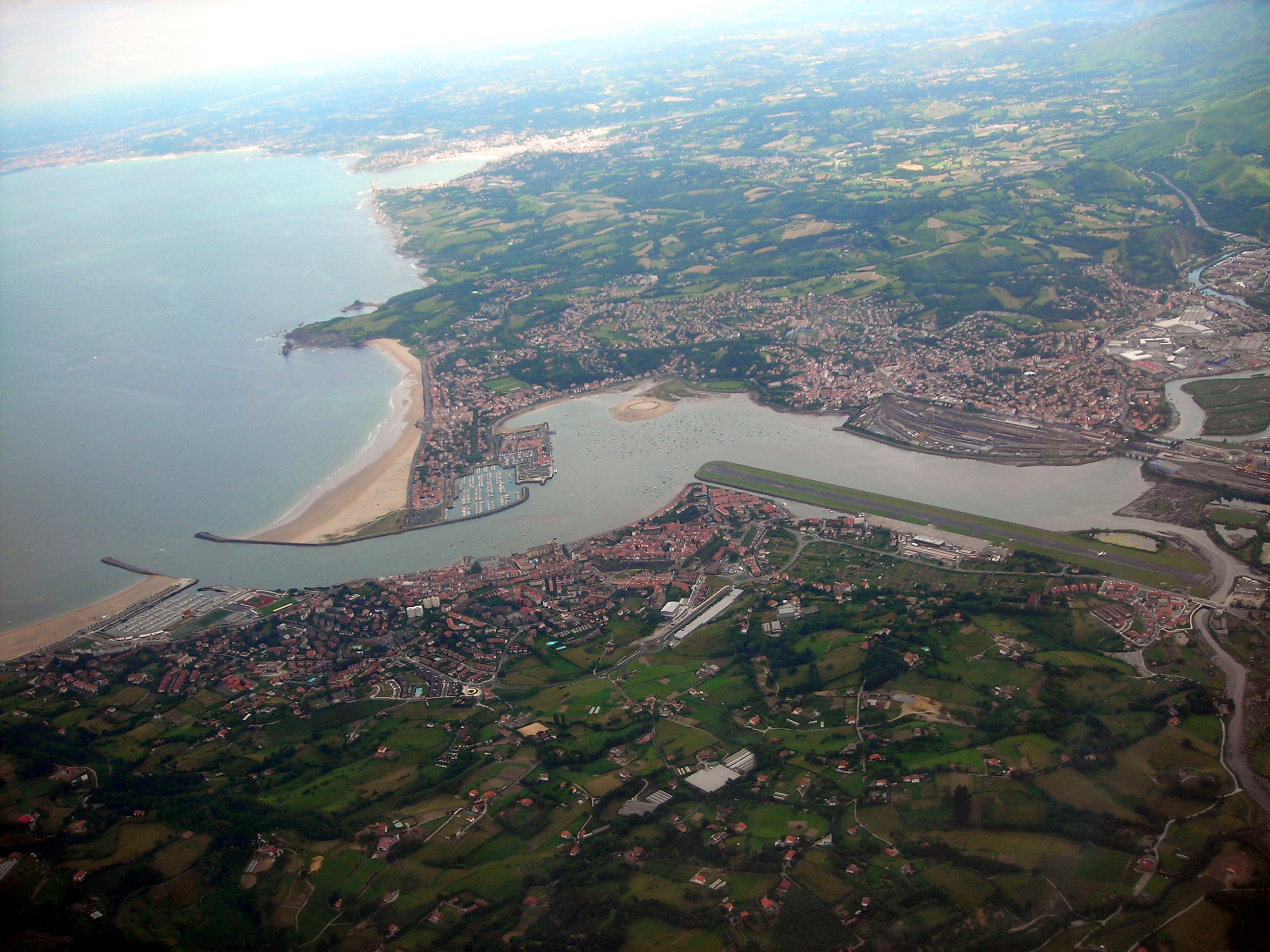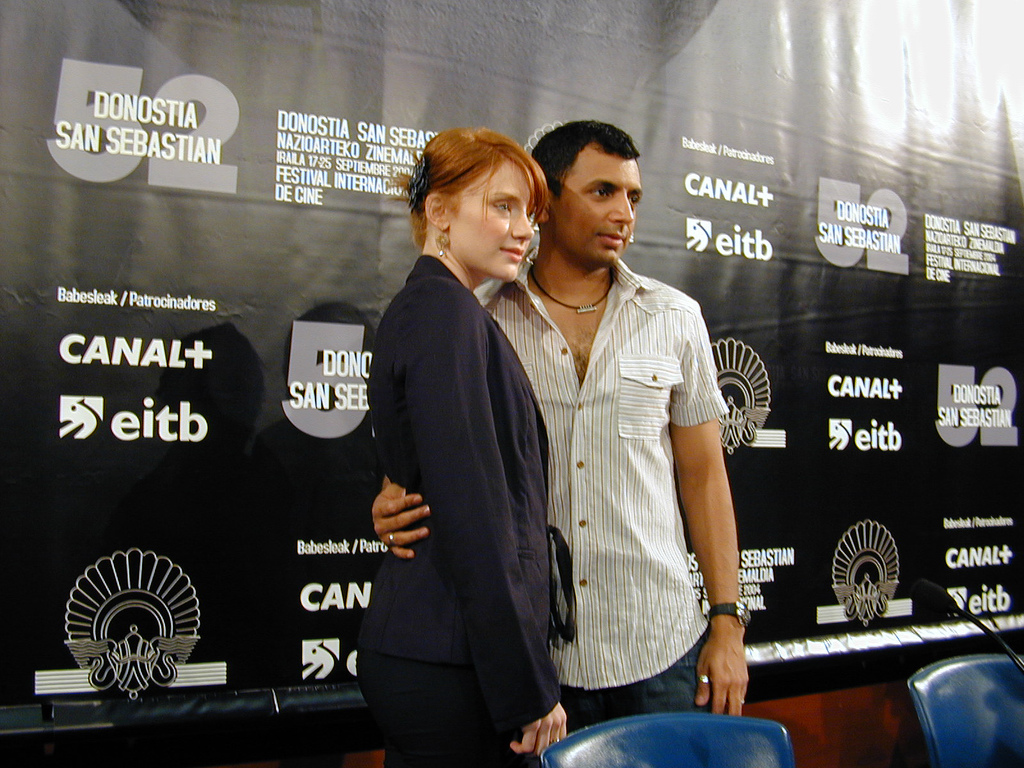|
San Sebastián
San Sebastian, officially known as Donostia–San Sebastián (names in both local languages: ''Donostia'' () and ''San Sebastián'' ()) is a city and municipality located in the Basque Autonomous Community, Spain. It lies on the coast of the Bay of Biscay, from the France–Spain border. The capital city of the province of Gipuzkoa, the municipality's population is 188,102 as of 2021, with its metropolitan area reaching 436,500 in 2010. Locals call themselves ''donostiarra'' (singular), both in Spanish and Basque. It is also a part of Basque Eurocity Bayonne-San Sebastián. The main economic activities are almost entirely service-based, with an emphasis on commerce and tourism, as it has long been one of the most famous tourist destinations in Spain. Despite the city's small size, events such as the San Sebastián International Film Festival and the San Sebastian Jazz Festival have given it an international dimension. San Sebastian, along with Wrocław, Poland, was th ... [...More Info...] [...Related Items...] OR: [Wikipedia] [Google] [Baidu] |
Oiasso
Oiasso,Ptolemy, 2, 6, 10 Oiasona Strabo, Geographia III, 4, 10. The Casaubonus editions of 1587 and 1620 write ''Oídasoûna'', corrected by Adolf Schulten to ''Oíasoûna''. or Oiarso Pliny, 3, 29 was a Basque Roman town located on the left bank of the Bidasoa estuary in the Bay of Biscay (current Basque Country, in Spanish territory). Archaeological evidence unearthed recently pinpoints the core area of Oiasso in the old quarter of Irun (Gipuzkoa) by the Spanish-French border, where harbour and bath remains have been discovered. However, two other focuses in Cape Higuer and hermitage Ama Xantalen (necropolis and mausoleum) point to a wider complex outside the main nucleus. Actually, some authors note that the name Oiasso may have applied to the whole valley, arguing that the very name of the Bidasoa River may stem from Latin "via ad Oiasso", eventually rendering ''Bidasoa'' in Basque. Furthermore, it is widely assumed that the name for the town Oiartzun some 10 km away ... [...More Info...] [...Related Items...] OR: [Wikipedia] [Google] [Baidu] |
France–Spain Border
The France–Spain border (; ) was formally defined in 1659. It separates the two countries from Hendaye and Irun in the west, running through the Pyrenees to Cerbère and Portbou on the Mediterranean Sea. Features Main border The Franco-Spanish border runs for between southwestern France and northeastern Spain. It begins in the west on the Bay of Biscay at the French city of Hendaye and the Spanish city of Irun (). The border continues eastward along the Pyrenees to Andorra (). At this point, the small country interrupts the border between Spain and France for on the Spanish side and on the French side. Then the border continues eastward () to the Mediterranean Sea at Cerbère in France and Portbou in Spain (). From west to east, crossing the border: * Spain ** Gipuzkoa (Basque Country) ** Navarre ** Province of Huesca (Aragon) ** Province of Lleida (Catalonia) ** Province of Girona (Catalonia) * France ** Pyrénées-Atlantiques (Nouvelle-Aquitaine) ** Hautes-Pyrénée ... [...More Info...] [...Related Items...] OR: [Wikipedia] [Google] [Baidu] |
Saint Sebastian
Saint Sebastian (in Latin: ''Sebastianus''; Narbo, Gallia Narbonensis, Roman Empire c. AD 255 – Rome, Italia, Roman Empire c. AD 288) was an early Christian saint and martyr. According to traditional belief, he was killed during the Diocletianic Persecution of Christians. He was initially tied to a post or tree and shot with arrows, though this did not kill him. He was, according to tradition, rescued and healed by Saint Irene of Rome, which became a popular subject in 17th-century painting. In all versions of the story, shortly after his recovery he went to Diocletian to warn him about his sins, and as a result was clubbed to death. He is venerated in the Catholic Church and the Orthodox Church. The oldest record of the details of Sebastian's martyrdom is found in the '' Chronograph of 354'', which mentions him as a martyr, venerated on January 20. He is also mentioned in a sermon on Psalm 118 by 4th-century bishop Ambrose of Milan (Saint Ambrose): in his sermon, Amb ... [...More Info...] [...Related Items...] OR: [Wikipedia] [Google] [Baidu] |
Wrocław
Wrocław (; , . german: Breslau, , also known by other names) is a city in southwestern Poland and the largest city in the historical region of Silesia. It lies on the banks of the Oder in the Silesian Lowlands of Central Europe, roughly from the Sudeten Mountains to the south. , the official population of Wrocław is 674,132 making it the third largest city in Poland. The population of the Wrocław metropolitan area is around 1.25 million. Wrocław is the historical capital of Silesia and Lower Silesia. Today, it is the capital of the Lower Silesian Voivodeship. The history of the city dates back over 1,000 years; at various times, it has been part of the Kingdom of Poland, the Kingdom of Bohemia, the Kingdom of Hungary, the Habsburg monarchy of Austria, the Kingdom of Prussia and Germany, until it became again part of Poland in 1945 as the result of territorial changes of Poland immediately after World War II. Wrocław is a university city with a student popula ... [...More Info...] [...Related Items...] OR: [Wikipedia] [Google] [Baidu] |
San Sebastian Jazz Festival
Jazzaldia, more commonly known as the San Sebastian Jazz Festival, is a jazz festival in San Sebastian, Spain, held every year during the third week of July, and lasting for five days. The festival was founded in 1966, as the first jazz festival in Spain and one of the oldest in Europe. The Jazzaldia hosts around a hundred concerts on twelve stages across the city. Some of these concerts are free and others are ticketed; and some of the venues are in the open air and some others are indoors. Among these, the concerts in Zurriola Beach and the terraces of the Kursaal Auditorium are attended by the most people. In 2022, around 150,000 people attended the festival. History The first San Sebastian Jazz Festival took place on 10 and 11 September 1966. The following year the festival was moved to July, where it has remained since then. At first, Jazzaldia was an international competition for amateur groups, and the only professional performance was by Mickey Baker. Plaza de la Tri ... [...More Info...] [...Related Items...] OR: [Wikipedia] [Google] [Baidu] |
San Sebastián International Film Festival
The San Sebastián International Film Festival ( SSIFF; es, Festival Internacional de San Sebastián, eu, Donostia Zinemaldia) is an annual FIAPF A category film festival held in the Spanish city of Donostia-San Sebastián in September, in the Basque Country. Since its creation in 1953 it has established itself as one of the 14 "A" category competitive festivals accredited by the FIAPF, of which it has one of the lowest budgets. It has hosted several important events of the history of cinema, such as the international premieres of ''Vertigo'', by Alfred Hitchcock (who attended the Festival) and the European premiere of '' Star Wars''. It was the first festival attended by Roman Polanski and has helped advance the professional careers of filmmakers such as Francis Ford Coppola, Bong Joon-ho and Pedro Almodóvar. José Luis Rebordinos has served as the director of the festival since 2011. History The festival was founded in 1953 with the first festival starting on Septe ... [...More Info...] [...Related Items...] OR: [Wikipedia] [Google] [Baidu] |
Tourist Attraction
A tourist attraction is a place of interest that tourists visit, typically for its inherent or an exhibited natural or cultural value, historical significance, natural or built beauty, offering leisure and amusement. Types Places of natural beauty such as beaches, tropical island resorts, national parks, mountains, deserts and forests, are examples of traditional tourist attractions which people may visit. Cultural tourist attractions can include historical places, sites of significant historic event, monuments, ancient temples, zoos, aquaria, museums and art galleries, botanical gardens, buildings and structures (such as forts, castles, libraries, former prisons, skyscrapers, bridges), theme parks and carnivals, living history museums, public art ( sculptures, statues, murals), ethnic enclave communities, historic trains and cultural events. Factory tours, industrial heritage, creative art and crafts workshops are the object of cultural niches like industri ... [...More Info...] [...Related Items...] OR: [Wikipedia] [Google] [Baidu] |
Tourism
Tourism is travel for pleasure or business; also the theory and practice of touring, the business of attracting, accommodating, and entertaining tourists, and the business of operating tours. The World Tourism Organization defines tourism more generally, in terms which go "beyond the common perception of tourism as being limited to holiday activity only", as people "travelling to and staying in places outside their usual environment for not more than one consecutive year for leisure and not less than 24 hours, business and other purposes". Tourism can be domestic (within the traveller's own country) or international, and international tourism has both incoming and outgoing implications on a country's balance of payments. Tourism numbers declined as a result of a strong economic slowdown (the late-2000s recession) between the second half of 2008 and the end of 2009, and in consequence of the outbreak of the 2009 H1N1 influenza virus, but slowly recovered until the COV ... [...More Info...] [...Related Items...] OR: [Wikipedia] [Google] [Baidu] |
Service Sector
The tertiary sector of the economy, generally known as the service sector, is the third of the three economic sectors in the three-sector model (also known as the economic cycle). The others are the primary sector ( raw materials) and the secondary sector (manufacturing). The tertiary sector consists of the provision of services instead of end products. Services (also known as "intangible goods") include attention, advice, access, experience and affective labor. The production of information has been long regarded as a service, but some economists now attribute it to a fourth sector, called the quaternary sector. The tertiary sector involves the provision of services to other businesses as well as to final consumers. Services may involve the transport, distribution and sale of goods from a producer to a consumer, as may happen in wholesaling and retailing, pest control or entertainment. The goods may be transformed in the process of providing the service, as happens i ... [...More Info...] [...Related Items...] OR: [Wikipedia] [Google] [Baidu] |
Basque Eurocity Bayonne-San Sebastián
The Eurociudad Vasca Bayonne-San Sebastián (French: ''Eurocité basque Bayonne-Saint-Sébastien''; Basque: ''Baiona-Donostia Euskal Eurohiria'') is the name given to the urban cross-border region located between Spain and France along the coast of the Cantabrian Sea in the Bay of Biscay. Given the progressive European integration and the disappearance of internal borders in the European Union, as of 1993 various local institutions on both sides of the border created cross-border cooperation agreements that have led to the creation of a cross-border city project that brings together 42 local entities, both Spanish and French. This project covers the realization of common projects ( synergies in the tourism sector, freight transport, use of common infrastructures, etc.). The consortium that directs the project has the legal entity of a European economic interest group (''Groupement européen d'intérêt économique''). In the future it could become a eurodistrict. The project is ... [...More Info...] [...Related Items...] OR: [Wikipedia] [Google] [Baidu] |








